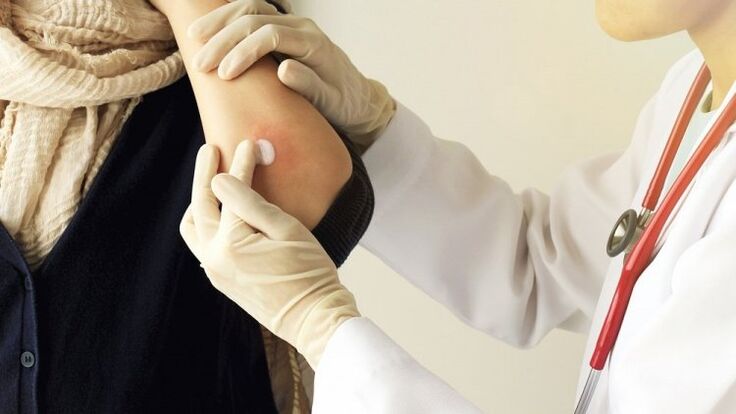Psoriasis is one of the most common chronic dermatoses. During such an abnormal process, damage to the skin as well as appendages to the skin are detected. The extreme urgency of the problem lies in the fact that it leads to a deterioration in the quality of life of the sick person due to aesthetic disorders.
The most common episode of psoriasis occurs between the ages of fifteen and forty-five. According to statistics, this disease is diagnosed in about three percent of the total population. In addition, the proportion of women and men with such pathology is equal.
There are several theories about the mechanism of psoriasis. The main one is the autoimmune theory, according to which this pathological process results from an incorrect immune response to external factors. An excessive immune response leads to an inflammatory reaction in the skin layers, which triggers the mechanisms of cell structure division and proliferation. In addition, it is hypothesized that hereditary predisposition and exposure to various infectious agents may play a role in the development of this disease.
Psoriasis has been shown to be most common in people who:
- have any other dermatological condition;
- Have thin and dry skin;
- Smoke and drink alcohol;
- Systematic contact with irritating chemicals;
- They often damage the skin due to mechanical effects;
- Adhere to excessive hygiene;
- exposed to severe stress;
- Decreased levels of immune protection or use medications that suppress immunity.
Depending on the symptoms of psoriasis, this pathology is divided into several forms:
- Plaque shaped. This form is the classic version. It occurs in more than eighty percent of people. The clinical picture in this case is characterized by characteristic scaly plaques that grow peripherally;
- Teardrop-shaped. The disease that occurs in this form is accompanied by the appearance of a number of tiny foci on the surface of the skin. Such lesions can be very different in color, rise above the surface of the skin, and detach intensely. Usually the size does not increase, only their number increases;
- Exudative form. This is one of the worst options. In this case, bubbles and blisters formed with whey liquid form on the surface of the plaques. Very often, such elements go through a secondary infection and later appear pus in them;
- Psoriatic onychodystrophy. It is characterized by the involvement of nail plates in the pathological process, which become streaked and thickened. In most cases, the nails become discolored, peeled and broken. In advanced cases, complete loss of the nail plate is possible;
- Psoriatic arthropathy. The symptoms of psoriasis in this case are inflammation of the joints and connective tissue. In some cases, this form develops on its own, but is most often associated with skin manifestations;
- Psoriatic erythroderma. This form is characterized by a very severe course and is often fatal. Inflammation can be observed in large areas of the body, accompanied by intense exfoliation and peeling of the skin.
The main symptoms of psoriasis

We will talk about the classic form in more detail. What Does Psoriasis Look Like? First, single papules appear on the surface of the skin that are pink or red in color. These papules are covered with silvery-white scales that can be easily scraped off. Over time, the number of papules increases and they begin to merge into plaques.
Plaques formed during the course of the disease are hyperemic and edematous in appearance. In some cases, mild itching of the skin may occur. Abnormal foci tend to grow fairly rapidly on the periphery, their surface being intensely flaky. Over time, the growth of plaques stops and their boundaries become clear. A specific sign of such an abnormal process is a pseudoatrophic margin located at the periphery of the foci. In the stationary section, a stagnant cyanotic hue is observed on the surface of the plaques.
Symptoms of psoriasis are characterized by a gradual disappearance of exfoliation from the central part during the regression phase. The skin then becomes normal in color, after which the tissue infiltration disappears.
Diagnosis and treatment of this disease

First of all, it is determined by the clinical picture of psoriasis. A triple of special phenomena indicates this pathological process: stearinphol, terminal film, and dew. The phenomenon of stearinfol is that exfoliation becomes more intense when the lesion is covered. If we continue scraping, the detachment of the thin film and the appearance of a wet and hyperemic surface can be observed - a phenomenon of the terminal film. The phenomenon of dew is indicated by the presence of punctate bleeding with further scraping.
The following medicines can be used to treat the disease:
- Glucocorticosteroids;
- cytostatics;
- antihistamines;
- Keratolytic and anti-inflammatory ointments.
In addition, various physiotherapy treatments are widely used.
Prevention of exacerbations of psoriasis
To prevent exacerbations, it is recommended to avoid stressful situations, give up bad habits, and eat well. In addition, you should limit skin irritation and avoid contact with substances to which you are allergic.























